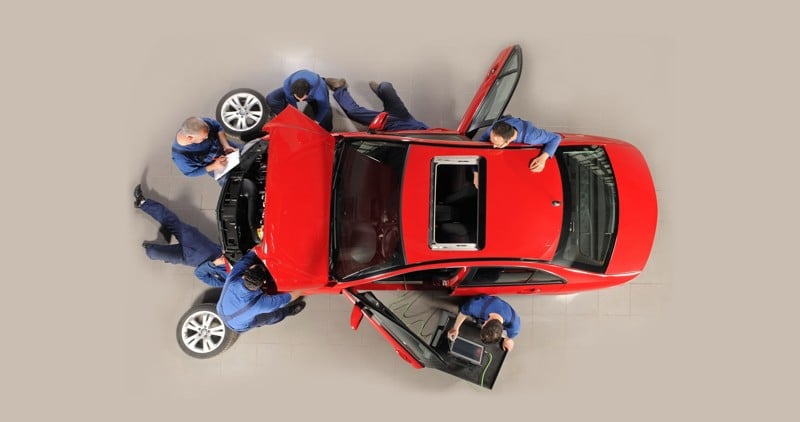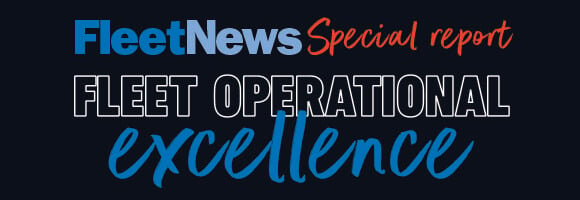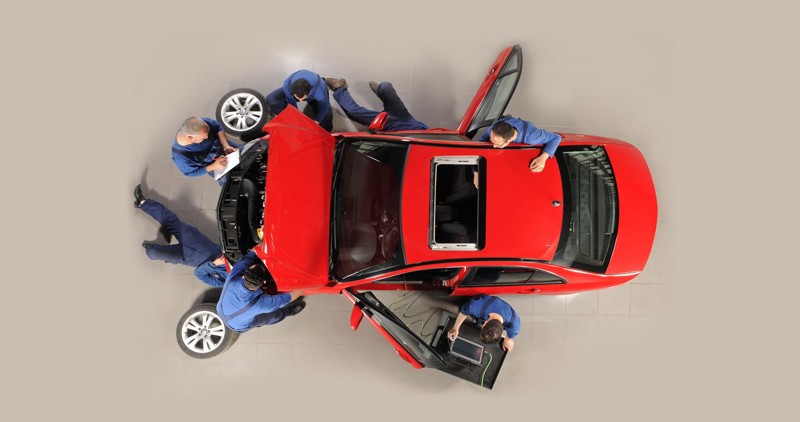This article is from our special report Fleet Operational Excellence

The fleet sector has undergone some major changes in recent years, but the main objective of an effective service, maintenance and repair (SMR) strategy has remained the same: to maximize vehicle availability, increase safety and reduce costs.
However, due to the ongoing impact of the Covid pandemic and the war in Ukraine, as well as new, emerging technologies, this has become increasingly difficult.
“It is well known in the fleet sector that parts production has been impacted in many ways over the past few years and this has had a significant impact on prices,” says Tim Meadows, Chief Commercial Officer at Epyx.
“This happened at a time when operators needed to keep their vehicles longer and many therefore had to buy more parts.
“For example, few fleets would have needed new clutches if they were operating on a three-year replacement cycle, but for fleets that keep their vehicles until they are four or five years old, the frequency of clutch problems is inevitably higher.
“Just when fleets needed more parts, they had to pay more for them.”
Using data from its 1link service network, Epyx found that average fleet parts prices have increased by 35% over the past four years. For a basket of common parts such as front discs and pads, wiper blades, clutch, pollen filters, headlight bulbs and spark plugs, the total cost has risen from £713 in 2020 to £963 in 2024.
The automotive aftermarket is also facing a skills shortage: The Institute of the Motor Industry estimates that there are around 23,000 vacancies there and that the shortage of electric vehicle (EV) technicians, mechanics and electricians is growing.
This has led to longer lead times for SMR work, which fleet management solutions provider i247 Group reports have stabilised this year but are still higher than pre-Covid levels.
Impact of electrification
The transition to electric vehicles has led to a radical shift in the SMR space. The general consensus is that SMR costs for a battery electric vehicle (BEV) are much lower than for an internal combustion engine (ICE) vehicle due to the significantly lower number of moving parts, and so far this has proven to be correct, says Vincent St Claire, Managing Director of Fleet Assist.
He adds: “However, the full picture of SMR budgets for BEVs is not yet known as we are only just beginning to cover similar mileages as combustion engine vehicles in a similar age profile.
“As the number of BEVs in operation increases, we are continually assessing when order parity between powertrains will be achieved.
“Due to the declining number of BEV registrations, we have postponed the date at which this will happen by nine months to early 2026.
“Due to the different economic structures of jobs, this is an important indicator.
“It is anticipated that at this point a paradigm shift in the fee structure may be required to ensure that the services expected from SMR fleets, such as delivery and collection services and replacement vehicles, continue to be provided.”
Another interesting development trend, according to St. Claire, is the type of contract award when comparing BEV with ICE.
The share of basic maintenance is higher for BEVs, at 70% of bookings. However, anecdotally, more warranty work appears to be carried out on BEVs.
“This does not mean that there are quality defects in BEVs,” adds St Claire. “This trend could be due to the fact that these vehicles typically have more complex systems and the latest cutting-edge software, which appear more vulnerable in this regard, with 7% of work being warranty work.”
Proactive SMR management
Although many of the events that have impacted SMR are beyond their control, there are several actions a fleet decision maker can take to improve performance in this area.
The first option is to proactively manage SMR, says the i247 Group. “When vehicles meet recommended maintenance intervals, the second-tier hidden costs of vehicle downtime are reduced,” says Steve Thornton, commercial director at i247.
“A fleet decision maker should also maximize their data to better understand their SMR needs.
“Take the time to truly understand your fleet data – from tire wear to driver behavior – as this will help you optimize your SMR strategy and budget.”
This data could come from technologies such as telematics or connected vehicles, so it is important to ensure that a fleet’s supply chain can support this.
“Monitor the innovations in this sector and understand how advances in connectivity can support your fleet as well as your financial and environmental, social and governance (ESG) goals,” adds Thornton.
Another development that could impact the future of SMR is the range of connected vehicle solutions provided by either OEMs or aggregators that promise predictive maintenance.
“When considering telematics and connected vehicle feeds, it’s important to understand your options. To do this, ask questions like: Do you have vehicles in your fleet that already have this option? Do you need a combined view, or is a separate view per OEM OK?” says St Claire.
“What is the data consistency across all your fleet vehicles? What are the deployment costs? And finally and most importantly, how will you use the data? Can the data be used for predictive maintenance or should you initially only receive basic information when a warning indicator or maintenance interval is displayed?
“In the short term, artificial intelligence (AI), combined with more relevant and easier access to telematics, higher data access costs and a greater variety of order management systems, is expected to drive up capital and operating costs for both fleets and workshops.
“However, there is a bigger prize. The long-term outlook is very exciting and extremely promising, with proactive maintenance and AI-driven diagnostics being two key technological levers. These, coupled with intelligent spare parts inventory systems for workshops, could deliver the holy grail.”
Driver training
One of the best ways to reduce downtime and costs through SMR is to reduce the need for repairs due to excessive vehicle wear.
“Driver training is key to optimal SMR management,” says Steve Thornton of i247. “Teaching drivers everything from the importance of scheduling maintenance appointments on time to checking tire pressure and driving smoothly will have a significant impact on fleet efficiency and the SMR budget.”
This education has become even more important in recent years with the introduction of new technologies making their way into even cheaper models, including BEVs, as many company car drivers may be driving a zero-emission model for the first time, says Vincent St Claire of Fleet Assist.
“Lack of knowledge and training regarding driving and charging can lead to unnecessary visits to the local garage, which someone has to pay for,” he adds.
“Make sure your drivers are aware of the ongoing challenges in aftersales SMR, such as longer lead times and a limited number of replacement vehicles available.
“It is therefore advisable to schedule your vehicle’s service appointment well in advance to avoid disappointment and missing your scheduled service appointment.”

Increase efficiency, reduce costs and improve compliance across all areas of your business with the Fleet News Operational Excellence report.
Dive into key topics for effective fleet management, including electrification, digitalization, alternative financing and compliance. To give you an edge, we’ve gathered insights from leading industry experts who reveal their best practices and innovative strategies.
Dive into these highlights and read the full report to unlock the secrets to more efficient and effective fleet operations.


